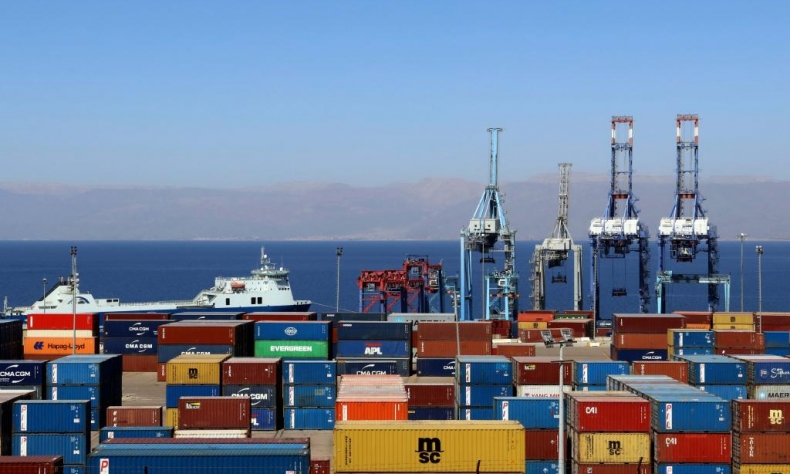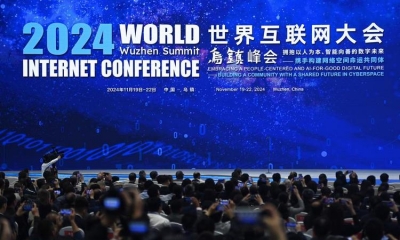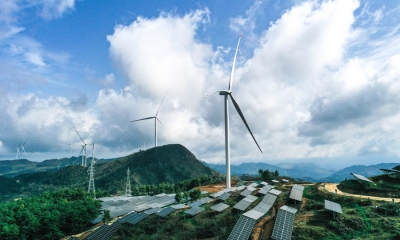Reshaping Trade Dynamics in a Multipolar World

The ultimate irony of Trump’s tariff strategy may be that it’s achieving the opposite of its intended effect.
When U.S. President Donald Trump announced sweeping “reciprocal tariffs” on Chinese goods—raising duties to 54 percent and then to 104 percent on all imports—he likely expected Beijing to fold under pressure. The move followed years of escalating trade tensions between the world’s two largest economies, with Washington seemingly convinced that economic pressure would force Beijing to capitulate. Instead, what we are witnessing is something far more significant. China is not just weathering the storm, but also exposing the fundamental weaknesses in America’s trade strategy. China has implemented carefully targeted actions designed to maximize impact while minimizing domestic economic disruption.
China has struck at the heart of America’s agricultural sector. It will impose additional 84 percent tariffs on all products imported from the U.S. starting from April 10, which are on top of the 10-15 percent tariffs placed on soybeans, pork and beef in early March. U.S. farmers will bear a heavy burden, since soybeans, oilseeds and certain grains were a key U.S. export to China, amounting to $13.4 billion last year. The announcement was made during spring planting season, when farmers were most vulnerable to market disruptions. The measures were carefully designed to maximize political pressure while minimizing collateral damage to China’s own food security, as Beijing had spent years diversifying agricultural imports from Brazil and Russia, reducing its dependence on American suppliers from 40 percent to just 18 percent of total imports since the 2018 trade war began.
Similarly, the restrictions on rare earth exports—affecting seven critical minerals essential for everything from smartphones to fighter jets—demonstrate this strategy perfectly. These materials aren’t easily sourced elsewhere, and the move has sent shockwaves through global supply chains. Major tech firms from Silicon Valley to Seoul are now scrambling to find alternatives, with some analysts estimating it could take Western companies 3-5 years to develop viable substitutes. Perhaps more significant than any single retaliatory measure is how China has successfully positioned itself as the standard-bearer for free trade against American protectionism. The European Union joined China in filing a WTO complaint against the U.S. tariffs. European Commission President Ursula von der Leyen’s recent statement that “unilateral trade barriers ultimately hurt everyone” reflects growing frustration in Brussels with Washington’s approach. Similarly, Brazil’s decision to accelerate trade talks with China, and Mexico’s quiet moves to facilitate Chinese investment in its manufacturing sector, suggest that America’s neighbors are hedging their bets.

The resilience of China’s economy in the face of these trade pressures stems from strategic preparations years in the making. Where China once depended on exports for nearly 40 percent of its GDP, today domestic consumption accounts for over 55 percent of economic activity. This rebalancing has created a massive internal market that can absorb shocks far better than during previous trade disputes. The explosive growth of Chinese tech and auto giants like Huawei, BYD, and TikTok parent company ByteDance demonstrates how China has moved up the value chain, reducing its reliance on low-margin manufacturing exports.
Technological self-sufficiency has become a cornerstone of China’s economic strategy. The 300 percent increase in domestic semiconductor production since 2020, while still not eliminating reliance on foreign chips, has significantly reduced vulnerabilities. In green technology, Chinese firms now dominate global markets for solar panels, electric vehicles, and battery storage—sectors that represent the future of energy. These advances have allowed China to cultivate alternative markets in the Global South, with countries like Saudi Arabia, Indonesia, and South Africa increasingly looking to Beijing rather than Washington for technology partnerships.
The financial architecture supporting China’s position has grown increasingly robust. While the U.S. dollar remains dominant, China’s network of currency swap agreements—now covering over 40 countries including major economies like Japan and the UK—provides an important safety net. The expansion of BRICS, with influential new members like Egypt and the UAE joining in 2024, offers additional avenues for trade settlement outside the dollar system. Perhaps most tellingly, even traditionally pro-American nations like Türkiye has been deepening their financial ties with China, suggesting a subtle but important shift in global economic alignments.
The ultimate irony of Trump’s tariff strategy may be that it’s achieving the opposite of its intended effect. Rather than isolating China, it’s pushing Beijing into a leadership role on trade issues. Rather than weakening the Chinese economy, it’s accelerating its transformation into a more balanced, technologically advanced system. And rather than demonstrating American strength, it’s revealing the limits of unilateral economic coercion in a multipolar world.
As the trade war escalates, we are seeing the outlines of a new global economic order emerge—one where power is more diffuse, where regional alliances matter as much as transatlantic ones, and where economic resilience proves more valuable than short-term advantage. In this context, China’s measured but determined response to American tariffs may be remembered not just as a successful defensive maneuver, but as a turning point in how the world thinks about trade, power, and economic sovereignty. The coming months will test both nations’ economic staying power, but the early evidence suggests China has prepared better for this confrontation.
The article reflects the author’s opinions, and not necessarily the views of China Focus.
 Facebook
Facebook
 Twitter
Twitter
 Linkedin
Linkedin
 Google +
Google +






